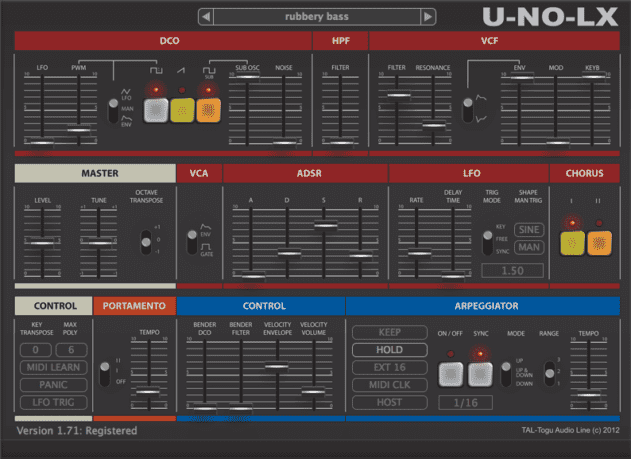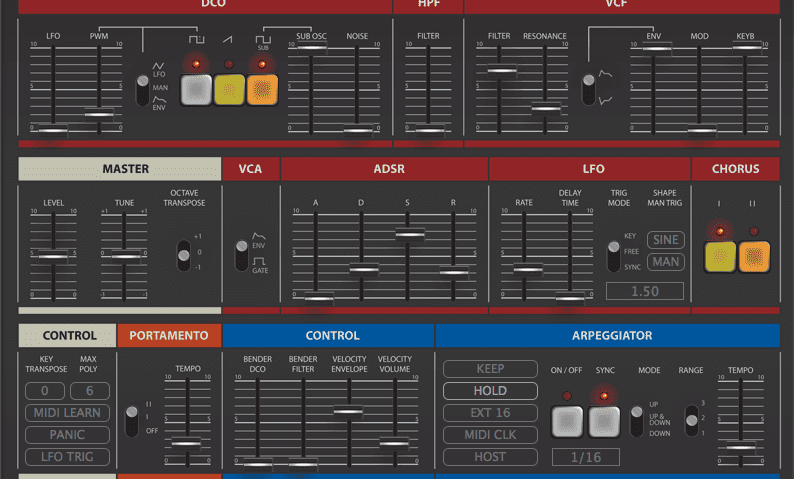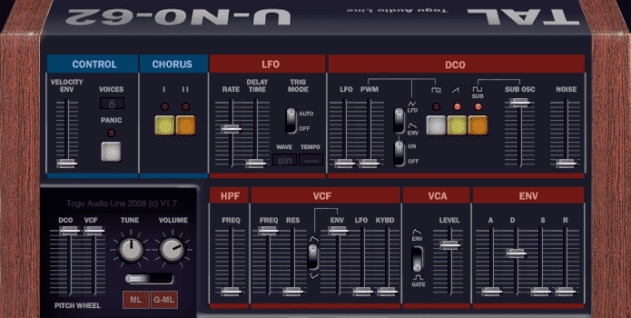Roland’s Juno 60 is a true classic synth but, as second-hand prices continue to rise, a software alternative might be a better option for most producers. Is TAL’s U-NO-LX the best Juno emulation ever?

Given their modern reputation as all-time classics, it’s incongruous to think that Roland Junos were originally budget synths. At a retail price of £699 in 1982, the Juno 6 was revolutionary, bringing polyphonic synthesis down to a relatively affordable price point for the average musician. The 6 and 60 (which was virtually identical but offered patch memory) went on to become huge sellers for Roland until they were replaced by the Juno 106 in 1984.
Swiss developer Patrick Kunz, trading as Togu Audio Line, is responsible for the excellent free Juno emulation TAL U-NO-62, which until now has been the best option for virtual Juno sounds.
U-NO-62 has now been replaced by the fully rewritten U-NO-LX plugin. It’s no longer free, but it promises a greatly expanded feature set and, more importantly, to sound more authentic than ever.
Classic Roland sound
Firing up the U-NO plugin and flicking through the presets, it’s immediately clear that the software has captured the characteristic Roland sound. Junos are famous for deep, subby bass, classic strings and pads and slightly plasticky leads, all of which can be found in the preset bank, which includes the original Roland factory presets.
The synth architecture is virtually identical to the simple Juno 60 setup, with one oscillator per voice, a square wave sub-oscillator, one envelope generator, a resonant 24dB/oct low-pass filter and, of course, that famous chorus circuit. The presence of the high-pass filter distinguishes it from the virtually identical Juno 6 architecture.
Kunz has resisted the urge to mess with the winning formula too much, but there are a couple of minor improvements to bring the features up to date. The arpeggiator, for instance, can sync with DAW tempo (although we’d like to see more time divisions on offer); the LFO features three trigger modes and offers sine, saw, rectangle and random waves in addition to the original triangle; velocity can be assigned to control filter envelope modulation or note volume. All parameters can be controlled via MIDI.
Just like the original Juno, U-NO has a very large sweet spot. It may not be the most versatile synth – it never gets seriously dirty like an MS-20, raw like a 303 or super fat like a Minimoog – but it’s very hard to make it sound bad. Coupled with the simple architecture, that makes it a great option for beginners. This kind of setup is just about the perfect introduction to programming a subtractive synth.
Conclusion
The biggest compliment we can pay U-NO-LX is that all the usual praise for the Juno 60’s sound applies equally as well in this case. TAL’s emulation is as close to the real thing as we’ve heard. Roland nerds will no doubt spot minor differences, but the sound is so authentic that most people would never be able to tell it apart from the real thing.
U-NO-LX doesn’t make a great number of changes or improvements to the original formula, but it captures the essence of the Juno sound as closely as any software. At $70, it’s also fairly priced. At the introductory price of $35, it’s a serious bargain.
Check out TAL’s demo to hear how close U-NO-LX sounds to a real Juno 60 (the hardware plays first in each case):
The Verdict
Price: $70
Purchase: TAL U-NO-LX
The Final Word
Classic sound, easy to program and fairly priced.


09.44 AM
Can’t believe this only got a 4/5 for Value for Money……..its one of the cheapest soft-synths I have bought and it sounds decent!
Good review and heads up though!!!
Keep on keepin on…. Attack mag!
12.45 PM
Love the TAL stuff – they have a range of free plugs that are fantastic. I’m definitely in favor of supporting indie developers, especially when they’re putting out such quality stuff. I use the U-NO-60 a lot and thought it was well worth the £ for an expanded version.
Additionally, I had a question and contacted Patrick, the developer – he got right back to me, so kudos for that as well.
03.52 AM
Definitely the best Juno plugin out there!
I have a real 106 which I use for creating sounds but use U-NO-LX live.
It sounds so close to the real thing. Well worth the purchase price.
Just read when this article was posted – ah well so I’m a bit late to the party…
09.23 PM
Brilliant! It truly is very hard to tell the difference. It seems the plugin is a very, very, very little bit brighter. But for the rest.. Perfect replica, at a fraction of the cost of the original.